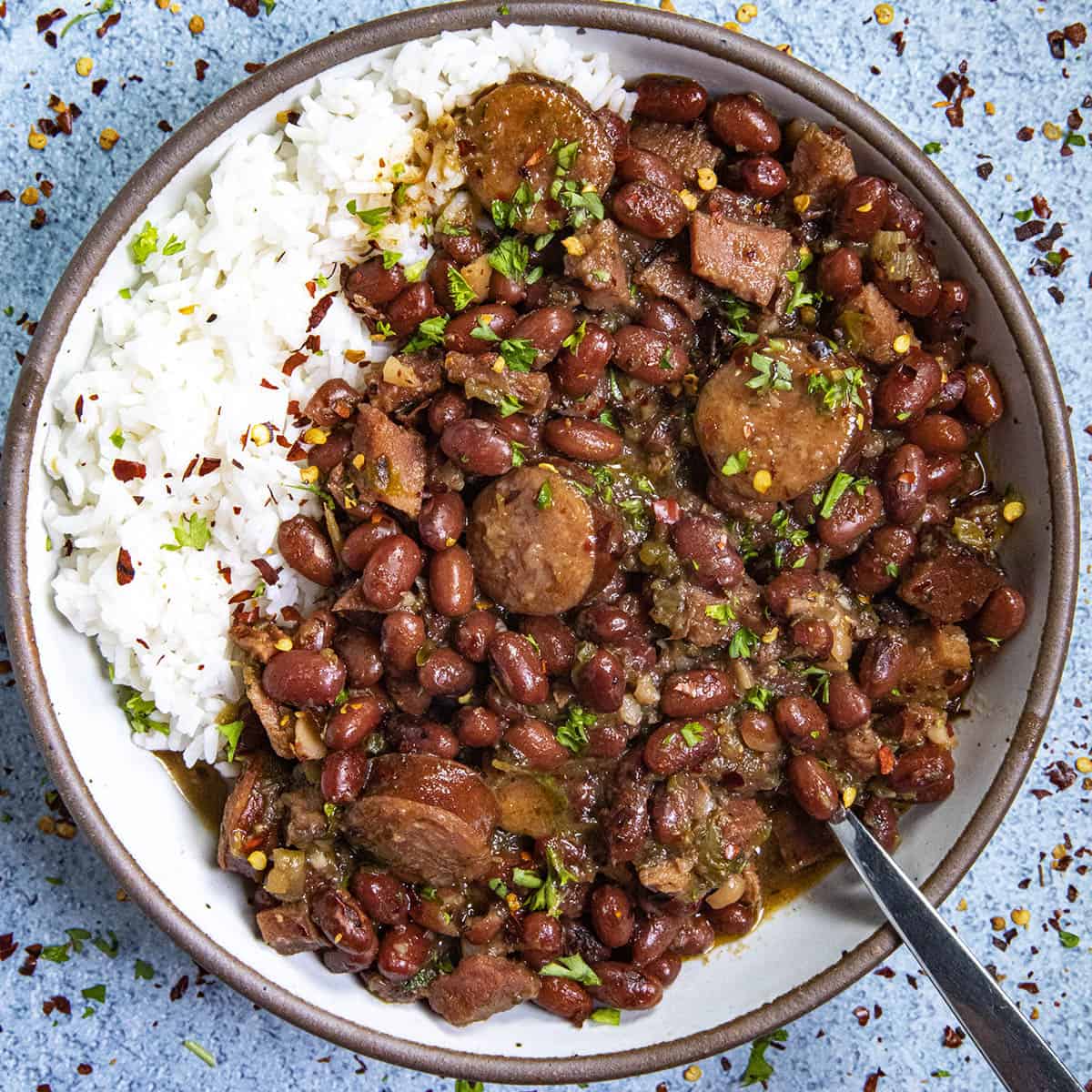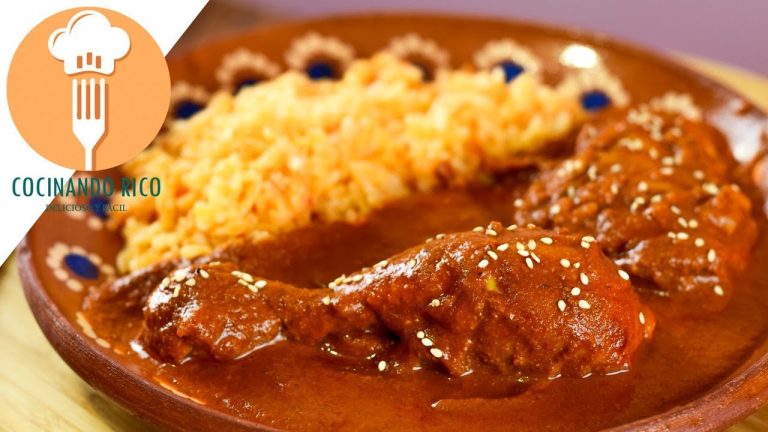New Orleans Red Beans and Rice: Recipe, Origins, and Serving Tips
New Orleans cuisine reflects strong French culinary traditions. French settlers introduced key ingredients like beans and rice to the region. By combining traditional French cooking methods with local ingredients, they created the foundation for red beans and rice. The use of herbs such as thyme, bay leaves, and parsley in seasoning the dish showcases this influence.
Afro-Caribbean Contributions
Enslaved Africans brought significant contributions to New Orleans’ culinary landscape. Their knowledge of growing and cooking with beans added depth to red beans and rice. Afro-Caribbean techniques, such as slow-simmering beans with smoked meats like ham hocks or andouille sausage, improved the dish’s flavor. These cooking styles, combined with the use of peppers, onions, and celery, formed the “holy trinity” of Louisiana cooking, emphasizing the dish’s rich cultural heritage.
Key Ingredients for Authenticity
Ingredients Overview
To make authentic New Orleans red beans and rice, you need specific ingredients. Dried red kidney beans form the base, providing the dish with its rich texture and hearty flavor. Use long-grain white rice for the best results, which offers the ideal complementary fluffiness. Include smoked ham hocks or leftover ham, which add depth and a smoky undertone.
Don’t overlook the “holy trinity” of Louisiana cooking: onions, bell peppers, and celery. These vegetables create a flavorful base when sautéed together. Add garlic for aromatic richness. Use bay leaves and thyme for herbal notes, while cayenne pepper and black pepper add the necessary heat. Always utilize chicken broth rather than water for simmering; it enriches the beans with additional layers of flavor.
Why Andouille Sausage Is Essential
Andouille sausage is indispensable in authentic New Orleans red beans and rice. This smoked pork sausage, seasoned with garlic, pepper, and other spices, infuses the dish with a robust, smoky flavor. It has a coarse-grained texture that stands up well to the long cooking process, ensuring it remains juicy and flavorful.
The use of andouille sausage adds a distinct spiciness synonymous with Cajun cuisine. While other sausages might be used, the unique combination of spices in andouille ensures an authentic taste. Slice the sausage into rounds and brown it before adding to the beans; this step enhances flavor complexity.
Cooking Techniques
Soaking the Beans
Soaking dried red kidney beans is a crucial step for authentic New Orleans red beans and rice. First, rinse the beans thoroughly in cold water to remove any dirt or debris. Use a large bowl to soak beans in water, ensuring they are covered by at least two inches. Allow the beans to soak overnight; this softens them and reduces cooking time. If you lack the time, use the quick-soak method. Boil the beans for 2 minutes, remove from heat, cover, and let stand for 1 hour.
The Importance of Slow Cooking
Slow cooking is essential for achieving the rich, flavorful profile in New Orleans red beans and rice. Begin by cooking the “holy trinity” (onions, bell peppers, and celery) in a large pot until softened. Add soaked beans, smoked ham hocks, andouille sausage, and spices, then cover with water or broth. Simmer on low heat for 2-3 hours, stirring occasionally to prevent sticking. Slow cooking allows the flavors to meld, producing tender beans and a deeply aromatic dish. Avoid boiling vigorously, as it can cause beans to break apart and alter the texture.
Serving and Presentation
Traditional Accompaniments
Authentic New Orleans red beans and rice often come with cornbread or French bread. Cornbread adds a slightly sweet, crumbly texture, balancing the dish’s savory components. French bread offers a crusty, chewy counterpoint, perfect for soaking up the flavorful bean gravy. Hot sauce, such as Tabasco or Crystal, is commonly served on the side, allowing you to adjust the spice level to your preference. Pickled vegetables like okra or green beans can complement the meal, adding a tangy contrast. For beverages, a classic choice would be sweet tea or a local New Orleans beer.
Tips for Plating
Proper presentation enhances the dining experience. Start by spooning a generous portion of rice onto the center of the plate. Create a slight well in the center of the rice to hold the red beans. Ladle the beans and their rich gravy into the well, allowing some to spill over the edges for visual appeal. Garnish with finely chopped green onions or parsley to add a burst of color. Arrange slices of andouille sausage on top for a rustic touch. Serve with a piece of cornbread or several slices of French bread on the side for authenticity. Provide hot sauce on the table for customization. Keep in mind that serving size should be spacious but not overwhelming.
Serving and Presentation Tips
- Cornbread: Balances savory elements with its sweetness.
- French Bread: Soaks up bean gravy for added texture.
- Hot Sauce: Adjust spice level to your preference.
- Pickled Vegetables: Add tangy contrast.
- Sweet Tea or Local Beer: Complements the flavors.
- Rice Base: Generous portion in the center.
- Beans and Gravy: Ladle into a well created in the rice.
- Garnish: Green onions or parsley.
- Sausage Slices: Place on top for a rustic touch.
- Side Bread: Cornbread or French bread.
- Hot Sauce: Serve on the table for customization.
Conclusion
Bringing the rich flavors of New Orleans to your kitchen with authentic red beans and rice is a rewarding experience. By focusing on traditional ingredients and slow cooking methods, you’ll capture the essence of this cherished dish. Pairing it with classic sides like cornbread or French bread and choosing the right beverages enhances the overall meal. Thoughtful plating and attention to detail in presentation ensure that each bite is as visually appealing as it is delicious. Embrace the balance of flavors and textures, and you’ll create a memorable dining experience that pays homage to New Orleans’ culinary heritage.






